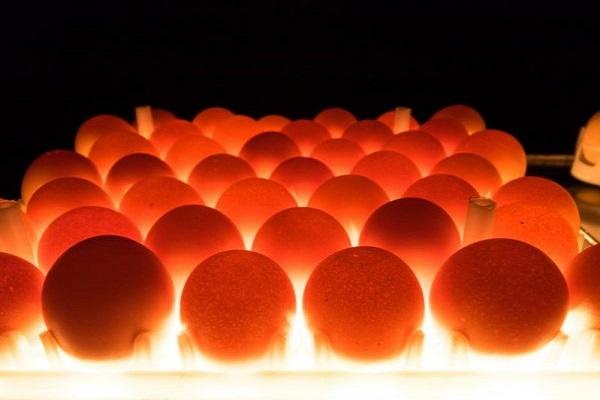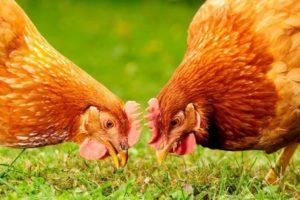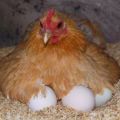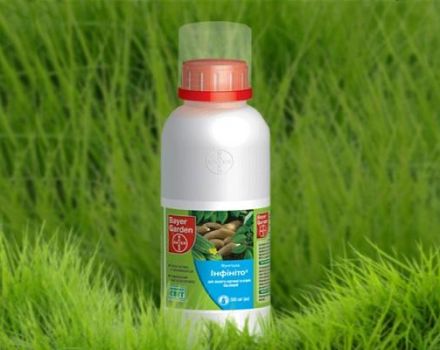Temperature and humidity for incubating chicken eggs at home
Incubation of selected chicken eggs makes it possible to obtain healthy offspring of poultry and significantly reduce the cost of acquiring young animals. True, this process is quite troublesome, it requires a lot of dedication and a serious attitude. But with the right approach and organization of the process, the result fully justifies itself.
Content
- 1 Features of breeding
- 2 Selection and preparation of eggs for incubation
- 3 Incubator selection and preparation
- 4 How to bookmark
- 5 How to maintain the necessary conditions in the device?
- 6 Influence of conditions on chick development
- 7 Incubation stages and temperature conditions
- 8 Chick inspection
- 9 Chick care after incubation
- 10 Mistakes of novice poultry farmers
Features of breeding
Ideally, hatching should be done directly by the brood hen. However, one bird can reproduce up to 15 chicks. This amount is not enough even for a private household, so you have to resort to using incubators. In standard appliances for domestic use, the temperature is not evenly distributed, therefore it is recommended to stir the eggs daily. Humidity is regulated by placing it inside containers with water.
In the process of hatching chicks, it is necessary not only to maintain the humidity at the desired level, but also to control the temperature, provide air flow, and sometimes even cool the eggs.
Selection and preparation of eggs for incubation
Particular attention is paid to the selection and preparation of eggs for incubation. The success of the whole business, as well as the health and normal development of the future brood, depends on their quality and suitability.
Ovoscopy
A device such as an ovoscope provides the ability to:
- timely detect defects in the shell (microcracks, depressions, build-ups);
- assess the dimensions of the air chamber, which should not exceed 4 mm;
- assess the position of the yolk and find out if it shifts with sharp turns;
- consider the so-called marble shell, which indicates a calcium deficiency;
- see the presence of dark spots indicating the presence of mold;
- consider foreign objects or blood clots;
- see the number of yolks and, if necessary, cull, since two-yolk eggs are not suitable for incubation.
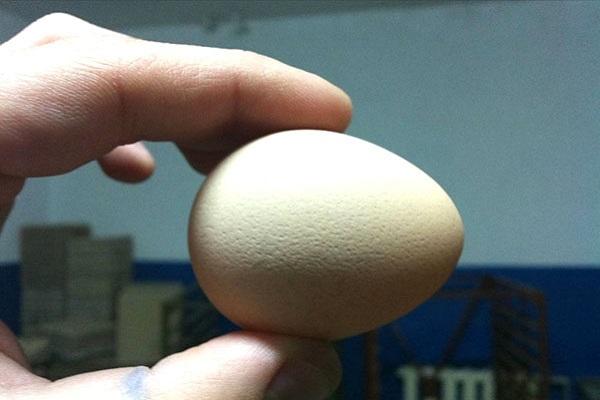
Egg storage
Before placing in the incubator, it is necessary to warm up the selected material in a warm room. The eggs must reach a temperature of + 25 ° C.
Disinfection of eggs
Some farmers are of the opinion that eggs should not be washed before setting them in the incubator. However, experienced people still insist that cleaning from dirt and processing from bacteria are mandatory procedures. To do this, use a weak solution of potassium permanganate or 1.5% hydrogen peroxide. The shell is wiped with a soft cloth, previously soaked in a disinfectant liquid, which should have a temperature of about +30 ° C.
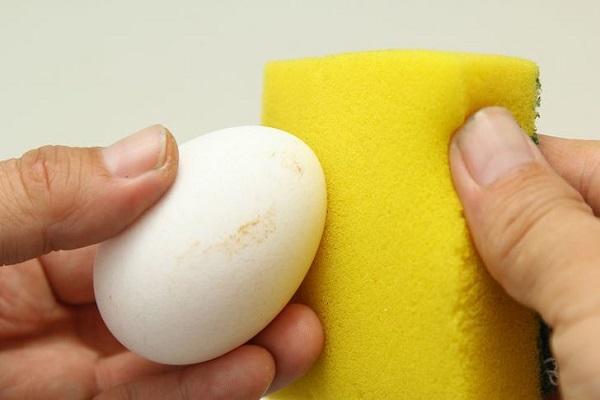
Incubator selection and preparation
Incubators differ not only in capacity, but also in the type of egg setting. It can be produced both vertically and horizontally. When laying eggs horizontally, turn them 180 °, and when laying them vertically, tilt them in different directions by 45 °.
Experts recommend units with a horizontal setting method, since it is this that is natural when brooding chickens. To get closer to the source of heat, the embryo needs to rise as high as possible.
How to bookmark
In order to set the eggs correctly, it is necessary to establish the type of setting in the incubator, having studied the necessary documentation in advance and examining it externally. Usually, domestic devices provide for horizontal laying, and in industrial ones - vertical with automatic flip. In the second case, it is necessary to lay the eggs with the blunt end up.
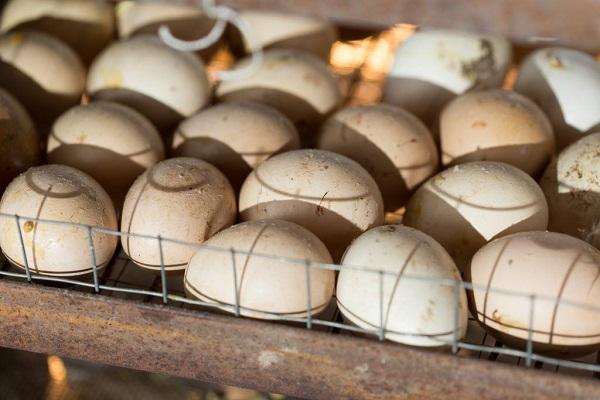
Experts recommend selecting eggs of the same size in one tab, since each additional gram of weight extends the hatching time by almost an hour. If this is not possible, then first of all, the largest testicles are placed in the incubator, after 3 hours - medium ones, and after 7 hours - the remaining small ones.
Experienced farmers advise laying eggs around 6 pm. In this case, the chicks will begin to hatch in the morning, after 21 days. By the evening, almost all of them will be hatched.
How to maintain the necessary conditions in the device?
The incubator must maintain a certain microclimate. Chicks may die due to fluctuations in humidity and temperature. The optimum temperature for keeping chicken eggs is 37-40 ° C. The embryo can develop at a temperature of 27 to 43 ° C, however, with a decrease in this indicator, the time of hatching is delayed and the risk of embryo death or deviations in its development increases.

In the initial period, the air humidity in the incubator is maintained at 50%, and a few days before the hatching of the chicks, it is raised to 65-70%. The limit values of humidity are 45-82%, but experts do not recommend approaching them..
Influence of conditions on chick development
Hypothermia or overheating of the testicles causes the development of diseases in chicks. If in the incubator the heating source is located on top, then the temperature is maintained up to 40 ° C in the upper part of the apparatus. In the case when the sources are located on all sides, the temperature indicators should not exceed +38.5 ° С. These rules allow you to get healthy offspring without deviations in development and within strictly defined terms. If the brood does not appear within 24-25 days, then it makes no sense to wait for it.
Incubation stages and temperature conditions
It is noteworthy that for each breed of chickens, not only individual temperature regimes are established, but also other indicators at various stages of incubation.
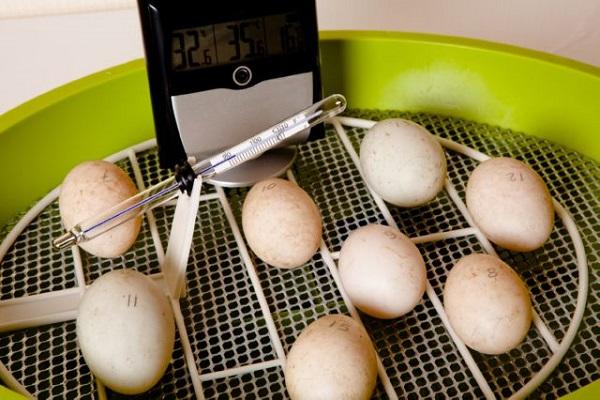
Egg and meat-egg breeds and crosses
Air temperature and humidity in the incubator are perhaps the most important parameters responsible for the full development and health of future chicks. If they are too high, then the chicks will hatch underdeveloped and weak, and if they are too low, they will be unviable and frail.
First period
The first incubation period lasts the first 18 days after setting. The temperature at this time is kept at 37.5 ° C, and the humidity is 50%. The testicles do not require additional refrigeration, but they must be rotated every hour. A week later, they are checked with an ovoscope. Those lacking a visible mesh of blood vessels should be removed. Below is a table with the main parameters of the content of eggs of these breeds in the incubator.
| Period | Timing | Humidity | Temperature | Turn |
| 1 | 1-18 days | 50% | 37.5 ° C | After 1-1.5 hours |
| 2 | 19-21 days | 70-75% | 37 ° C | Not required |
Second period
The final stage, which precedes the birth of chicks. It lasts from 19 to 21 days of bookmarking. The temperature regime in the incubator is maintained at +37 ° С, and the humidity rises to 75%. It is no longer necessary to turn the testicles. We should try to open the incubator as little as possible.
Broilers
Broilers have a specific hatching schedule of 4 chicks. It is difficult to follow all the recommendations at home, but with some effort it is possible to get a healthy, full-fledged brood. From the second week, in the morning and in the evening, it is necessary to make obligatory cooling of the eggs for 5 minutes.
First period
For boilers, this period takes only the first 2 days. The temperature is kept at 38 ° C, and the humidity is 50%. Eggs should be turned every 1-1.5 hours. If the incubator is not equipped with an automatic rotation system, then the procedure will have to be done manually 4-6 times a day. In order not to make a mistake with which side the eggs were turned, they must be marked by drawing some sign on the shell. The scheme of such a procedure is very simple and is not very difficult, but it requires diligence and patience.
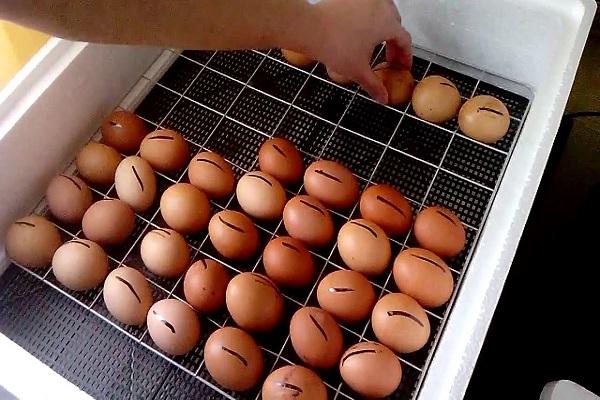
Second period
The incubation of the second period in broilers lasts from 3 to 12 days. Temperature indicators are reduced to 37.7 ° C, and the frequency of revolutions and the level of humidity are left at the same level.
Third period
This period lasts from 13 to 18 days. The temperature is lowered a little more, bringing it to the level of 37.5 ° C, and the humidity and the frequency of turning do not change. From the 14th day, they begin to gradually cool the eggs (5 minutes in the morning and in the evening). During this period, embryos require a lot of air, so the incubator must be periodically ventilated. Until the very beginning, the cooling time is slightly increased (by a few minutes).
The fourth period
This stage precedes the birth of chicks. It lasts from 19 to 21 days. The temperature should be lowered to 37 ° C, and the humidity should be increased to 70%. Eggs no longer require turning. On days 20-21, the temperature indicators are reduced even more (to 36.8 ° C), and the humidity is brought to 80%.
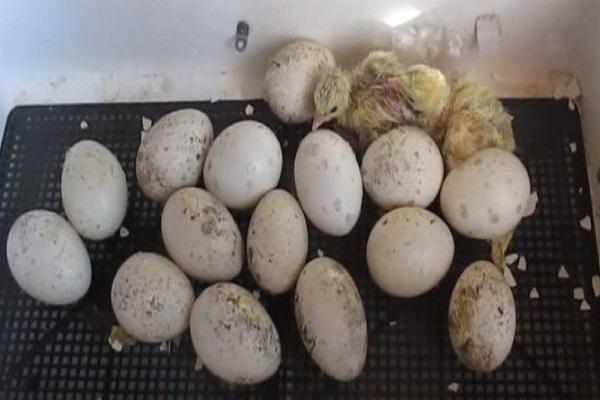
Chick inspection
After the chicks hatch in the incubator, they must be examined. Egg breeds are examined within 6 hours after birth, and meat breeds - 10 hours. Healthy and normally developed chickens should have the following characteristics:
- closed umbilical cord without bleeding;
- thick bright yellow fluff;
- eyes shine;
- the wings are symmetrically attached to the body.
After a few days (the chicks hatch inactive), the chicks become mobile, emit a calm squeak, and react to various sounds.
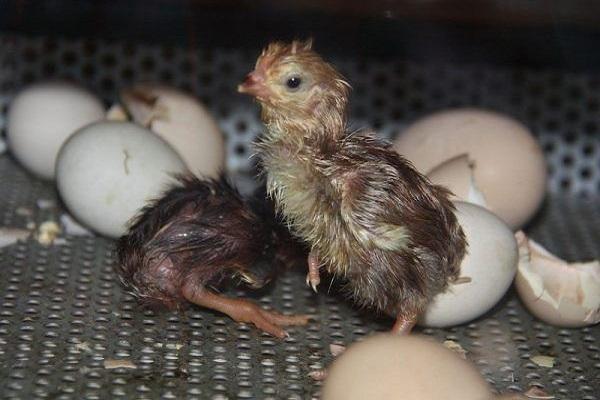
Chick care after incubation
After hatching, the chicks are left in the incubator until the fluff is completely dry, after which they are transferred to a specially prepared brooder. If there is none, and the livestock is small, then an ordinary cardboard box will do. For heating, it is recommended to hang up a red lamp and install a drinking bowl with clean water. The chickens are kept clean and dry. A rag is covered at the bottom, which can be easily changed and washed.
The first feeding is done on the same day the chicks hatch. They are fed exceptionally soft food, such as a hard-boiled egg. Subsequently, they switch to rougher feed (millet, special mixtures, compound feed). Chicks must have constant access to fresh and clean water. To do this, special drinkers are installed for them.
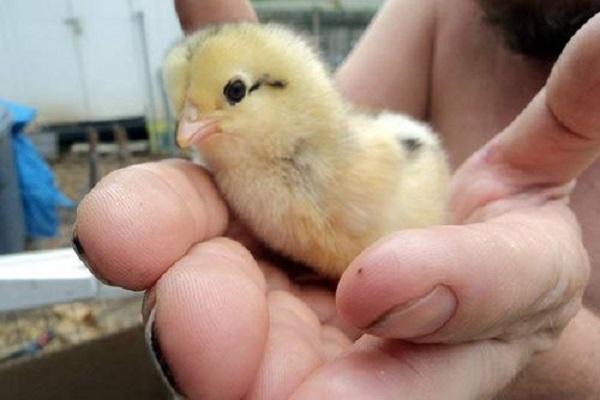
As soon as the chicks get stronger, they are moved to the chicken house. The room is prepared in advance by sterilizing and disinfecting it. The presence of viruses and infections should be completely excluded, and the brood should be protected from rats and cats. The area of the chicken house is selected in such a way that no more than 12 chicks are placed on one square meter. It is preferable to cover the floor with hay.
A week after hatching, the chickens are gradually taught to walk in the fresh air. On the first day, they walk them no longer than 1-1.5 hours, and then the time is gradually increased. Soon they will be able to spend all daylight hours outside, in a fenced-in corral. This procedure is beneficial for chickens, as the sun's rays contribute to the production of vitamin D, and this is an excellent prevention of rickets.
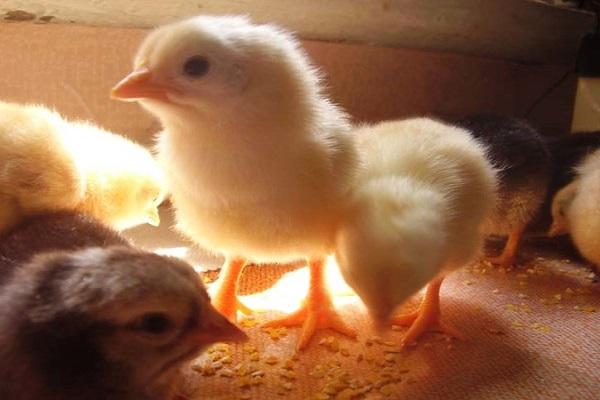
Mistakes of novice poultry farmers
When trying to hatch chicks in an incubator, novice poultry farmers often make mistakes that increase the amount of incubation waste. The most common ones are:
- Using too small or too large eggs for setting.
- Bookmark stale material or one that was stored in improper conditions (in a refrigerator or in rooms with an air temperature above +20 ° C).
- Use for setting eggs with shells contaminated with droppings.
- Use of eggs with obvious defects and defects.
- Incorrect setting of the incubator, non-compliance with the incubation modes.
Before engaging in raising chickens and sending eggs to a bookmark, it is necessary to study special literature, get a sufficient level of theoretical training and knowledge. It will take patience and endurance to constantly monitor the humidity, temperature in the incubator, as well as to make rejection on time.

